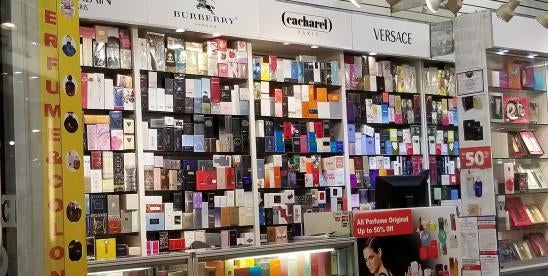The cost of designer handbags has been steadily increasing with goods such as the Chanel Classic Handbag now topping out at more than $10,000. As The Wall Street Journal recently observed, “Designers are charging more for their most recognizable bags to maintain the appearance of exclusivity.”1 As a result, cost-conscious consumers who want a taste of luxury are turning to the second-hand marketplace for more affordable, previously owned gems.
In response, an entire segment of social media influencers has popped up around the resale market2 with a corresponding surge in trademark cases as luxury brands assert their intellectual property rights against resellers. As a general matter, under the “first sale” doctrine, designer bags can be resold freely, and brands are unable to prohibit such sales.
However, a relevant aspect of reselling is the need to use the original brand’s trademark as a source identifier to refer to the specific item being sold. This practice is known as “nominative fair use,” which is permitted so long as there is no likelihood of confusion about the source of the reseller’s products or the mark holder’s sponsorship of, or affiliation with, the reseller.
A recent jury verdict in Chanel v. What Goes Around Comes Around (WGACA) serves as a reminder that businesses must routinely assess their practices to ensure they are protected by the first sale and fair use doctrines. In WGACA, Chanel sued WGACA for trademark infringement and false association, alleging that WGACA sold infringing products and improperly used Chanel’s marks in its advertising. On February 6, 2024, a jury in the Southern District of New York ruled against WGACA and awarded Chanel $4 million in damages. The matter appears destined for appeal.
Background
Chanel specializes in luxury apparel and leather goods, and owns the trademarks Chanel and CC, as well as Coco Chanel’s publicity rights. WGACA is a retailer that specializes in the sale of second-hand luxury clothing, bags and accessories, and guarantees the authenticity of all products sold on its website. Among the products sold by WGACA were Chanel products, which were not purchased from Chanel, but rather sourced them from individuals and international wholesalers.
Chanel principally objected to WGACA’s advertising practices, such as the use of:
- Retail displays prominently employing Chanel’s trademarks, including a giant Chanel No. 5 perfume bottle and a Chanel-branded cake
- Direct-to-consumer emails prominently displaying Chanel’s trademarks
- The #WGACAChanel hashtag in social media posts
- WGACA sales ads prominently featuring Chanel items
- Historical images of and quotations from Coco Chanel on WGACA’s website.
Chanel alleged that this conduct falsely implied an affiliation between Chanel and WGACA. The parties did not dispute that Chanel never had an affiliation with WGACA.
Outcome of the Litigation
Chanel asserted claims for trademark infringement and false association under the Lanham Act. In response, WGACA argued that the suit was an attempt by Chanel to gain control over the secondary market and foreclose the lawful resale of goods.
To prevail on a Lanham Act claim, a plaintiff must prove a probability of confusion as to the source of the product. However, when an alleged infringer is using another’s trademark to identify the plaintiff’s goods, the Polaroid factors3 (used for assessing the likelihood of confusion) are adapted to include the nominative fair use factors. The application of these factors focuses on the ultimate question of whether consumers are likely to be confused as to the origin of the products.4
The nominative fair use factors, as applied in the context of this case, were described as follows:5
- Whether the use of the Chanel marks were necessary to describe Chanel’s products and WGACA’s products, i.e., whether the products were not readily identifiable without use of the marks
- Whether WGACA used only so much of the Chanel mark as necessary to identify the products
- Whether WGACA did anything that that would in conjunction with the marks suggest sponsorship or endorsement by Chanel.
In its summary judgment opinion, the court looked closely at the second factor, which requires an analysis as to whether the alleged infringer “stepped over the line” into likelihood of confusion by using the senior user’s mark (here Chanel) too prominently or too often in terms of size, emphasis or repetition.6 On this issue, WGACA attempted to analogize its case to Chanel v. The RealReal, another ongoing case brought by Chanel against a retailer in second-hand designer bags.7
But, in The RealReal, Chanel did not identify facts suggesting The RealReal displayed Chanel-branded goods more prominently than other luxury brands, or that The RealReal used the Chanel marks in any capacity other than to identify Chanel products as originating with Chanel. For example, as related to website advertising, The RealReal had a “Chanel” page advertising Chanel product and included brand-specific pages for nine other luxury brands.
Further, in The RealReal, the court noted that The RealReal’s actions did not create an affiliation with Chanel because its website (unlike WGACA’s) expressly disclosed that the brands identified were not involved in the product authentication process and were not affiliated with the reseller.
In the absence of a similar disclaimer, the court in Chanel v. WGACA found that there were issues of material fact and therefore denied summary judgment, leading to the February 2024 jury trial and adverse verdict against WGACA.
Implications
Resellers should be vigilant in examining how extensively they use third-party trademarks, particularly as it relates to advertising. The nominative fair use and the first sale doctrines have not been altered by WGACA, but the market has been reminded that these defenses are fact-specific and should not be taken for granted. Particularly for businesses in the hot resale market, the use of disclaimers is crucial.
_______________________________________________________________________________
1 https://www.wsj.com/finance/stocks/why-prices-for-the-worlds-most-expensive-handbags-keep-rising-ef49c014 (last accessed April 5, 2024).
2 E.g., https://finance.yahoo.com/news/high-paying-side-hustle-thousands-141646378.html?guccounter=1 (last accessed April 5, 2024).
3 Polaroid Corp. v. Polarad Electronics Corp., 287 F.2d 492 (2d Cir. 1961).
4 Arrow Fastener Co. v. Stanley Works, 59 F.3d 384, 400 (2d Cir. 1995) (quoting Kelly-Brown v. Winfrey, 717 F.3d 295, 307 (2d Cir. 2013)).
5 Chanel, Inc. v. WGACA, LLC, 18 Civ. 2253, 2022 U.S. Dist. LEXIS 55880, at 16-17 (S.D.N.Y. Mar. 28, 2022) (citing Int’l Info. Sys. Sec. Certification Consortium Inc. v. Sec. Univ., LLC, 823 F.3d 153, 168 (2d Cir. 2016)).
6 WGACA, LLC, 2022 U.S. Dist. LEXIS 55880, at 24 (citing Int’l Info. Sys., 823 F.3d at 168).
7 Chanel, Inc. v. The RealReal, Inc., 1:2018-cv-10626 (S.D.N.Y.).



 i
i


